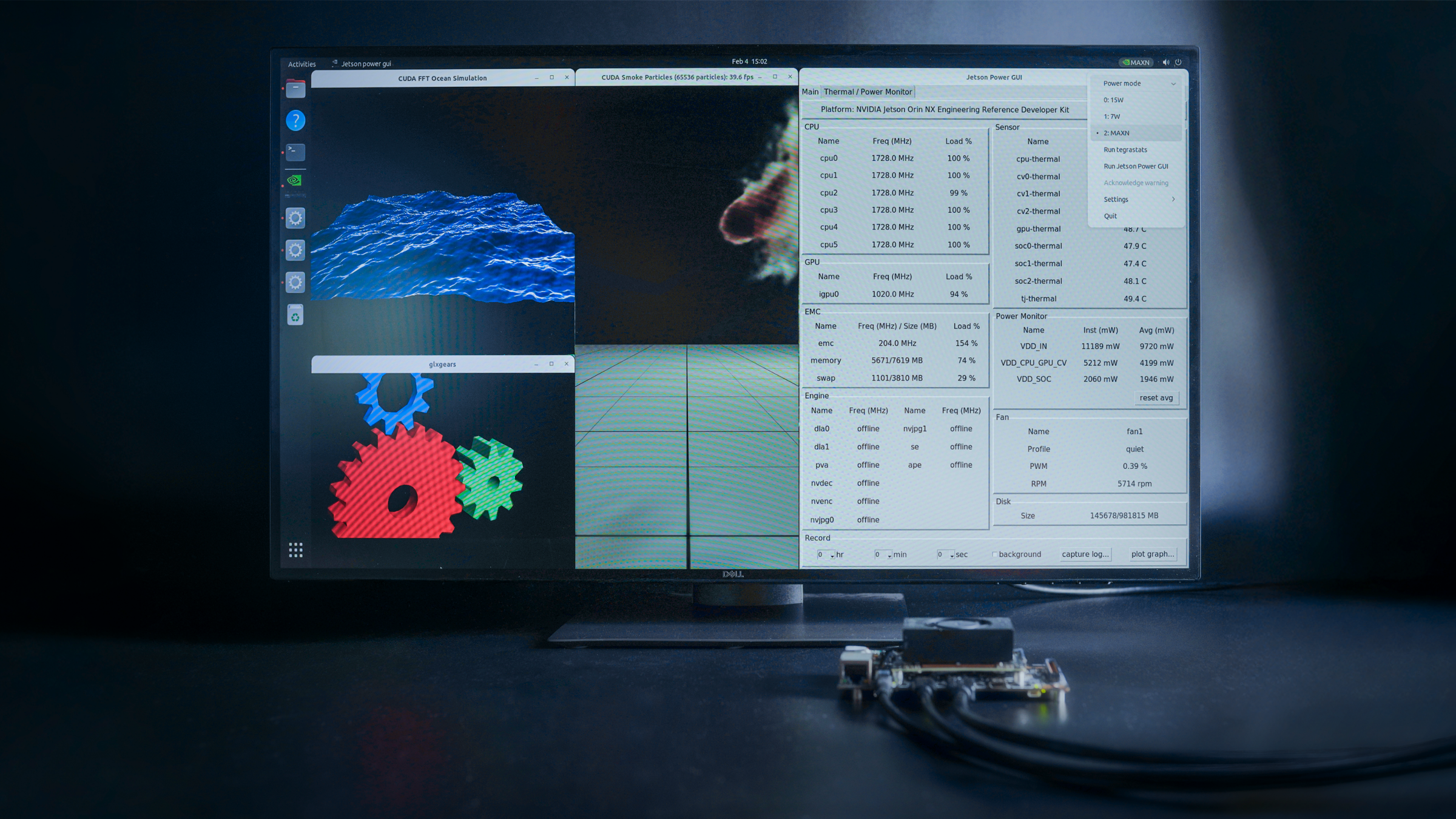In a recent blog note discussing the new NVIDIA Jetson Orin SoM lineup, we have mentioned that a successor to the greatly popular and versatile Jetson Nano Baseboard was in the works at Antmicro. The Jetson Nano Baseboard has found widespread use, and we have delivered many customized versions of the board to our customers, spanning a variety of industries, including medical, industrial machinery and automation, defense, drone, smart cities, and agriculture.
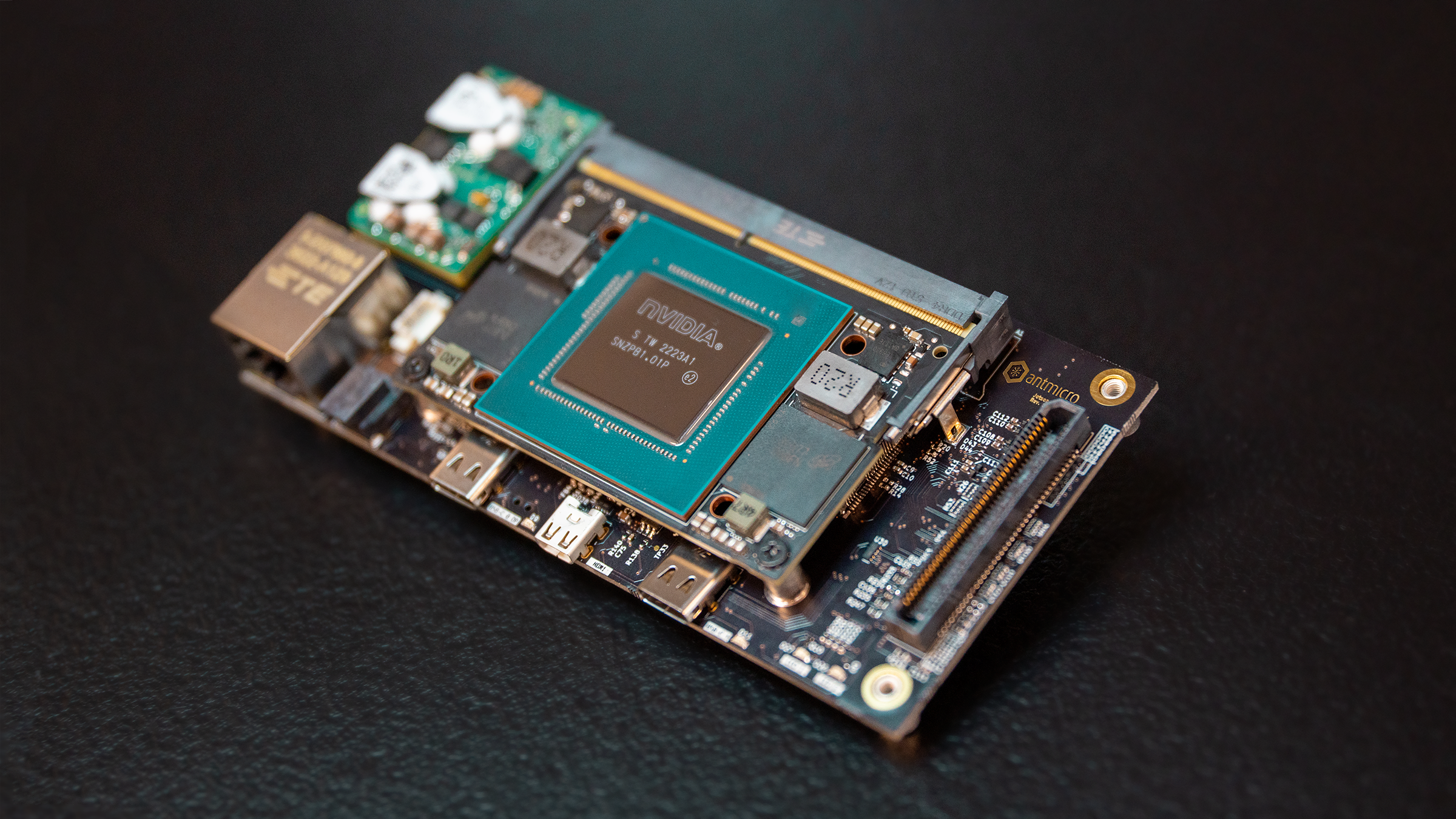
In the meantime, Antmicro has already started building on top of the Orin platform, e.g. benchmarking Deep Neural Networks in Kenning on Orin AGX, described in more detail in a previous blog note, and kicking off next-generation migration projects for some of our Jetson customers.
Now, with the latest NVIDIA Jetson Orin NX already in our hands, Antmicro is happy to announce the arrival of the open source Jetson Orin Baseboard targeted for the Jetson Orin NX. In this note, we will go over the baseboard’s technical highlights, interesting features and the use case possibilities they open. Below, you can see a photo of Linux running on the Jetson Orin Baseboard with Orin SoM:
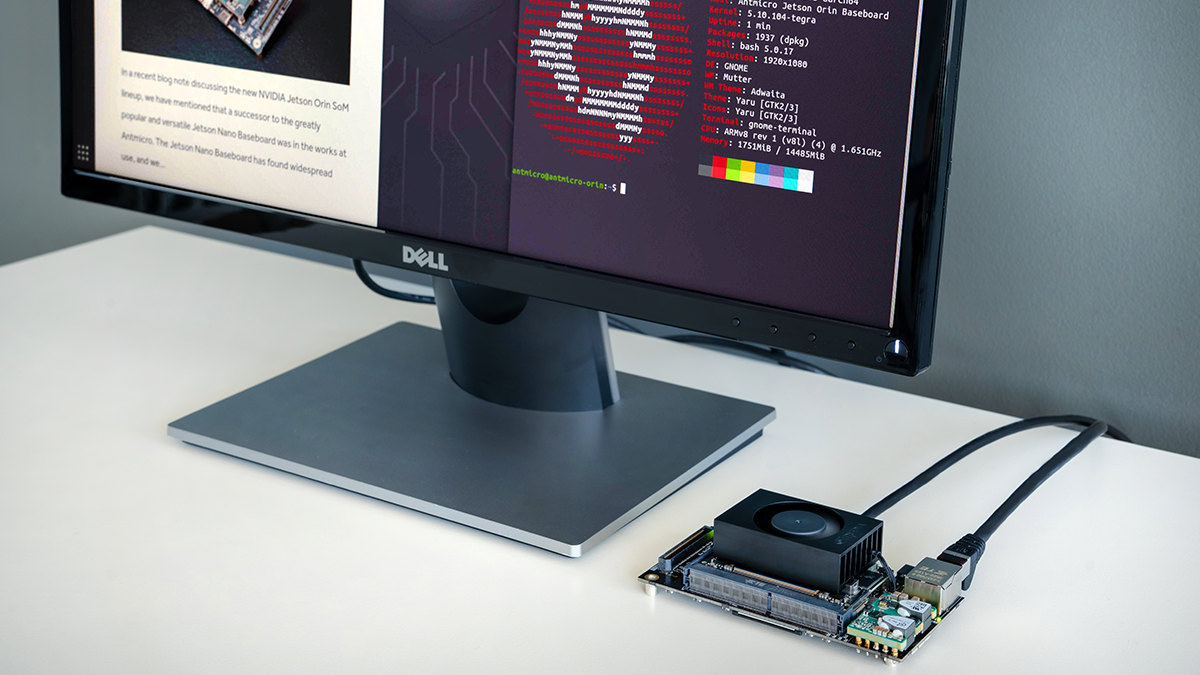
Baseboard feature overview
We have found that, for many customers, the compact size of many of our open hardware boards is an enabler for technical innovations which otherwise would not have been possible. At the same time, on top of the sheer performance upgrade that the Orin brings, we wanted to add some exciting new features to the new board over the original Nano baseboard.
The end result should be a pleasant surprise: packing a wide range of features, including the addition of Power over Ethernet (PoE) able to transmit up to 60W of power over the SoM’s native Gigabit Ethernet interface, the Orin baseboard still fits within a very compact footprint of 120 x 60 mm (as compared to the original baseboard’s 110 x 55 mm), with a max. height of 36 mm with the SO-DIMM SoM included.
Thus, the new board can be powered using three sources:
- Power over Ethernet
- 2x USB-C PD
- DC connector
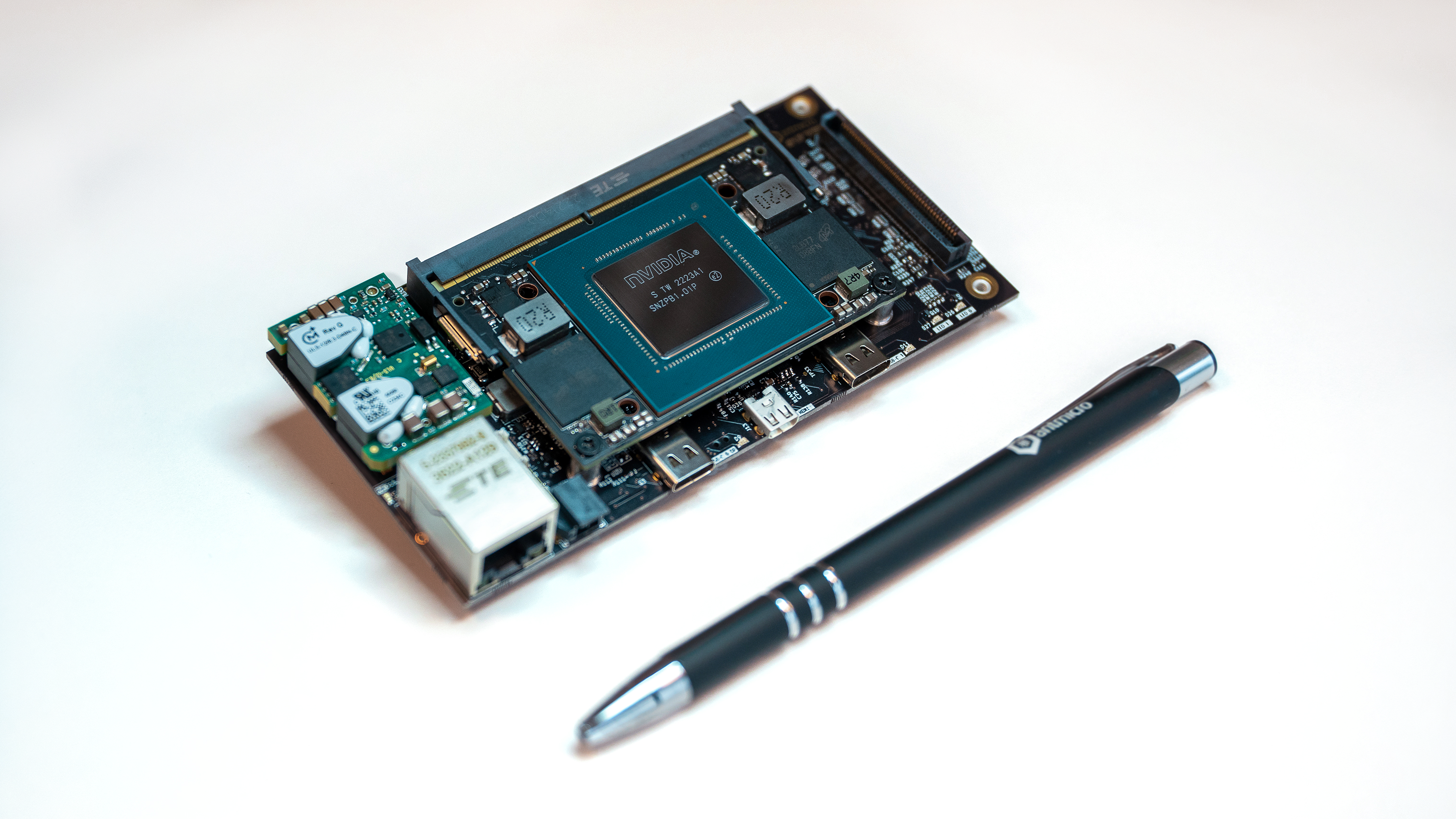
When it comes to video-related features, the board includes two 50pin CSI camera connectors marked with J7 and J8. Each connector provides a CSI interface with up to 2 cameras each (4 in total). The CSI connectors also provide cameras with power, I2C data and synchronization signals. Each CSI data lane exposed from the Jetson Orin NX has a peak bandwidth of 2.5 Gbps. The Jetson Orin Baseboard supports 4 possible configurations of CSI lane mapping selectable via assembly variants.
The open hardware Jetson Orin Baseboard exposes three USB-C connectors:
- USB 3.2 10 Gbps with DisplayPort alternate mode and USB PD 30 W sink / 15 W source capabilities, managed by the TPS65988 controller,
- USB 3.2 with speeds up to 10 Gbps,
- USB 2.0 connected to FTDI for debugging purposes with USB PD 30 W sink / 15 W source capabilities, managed by the TPS65988 controller.
A micro HDMI connector is also available. Note that the HDMI uses the same signals as the USB PD DisplayPort alternate mode, so only one can function at a time. The design allows for selection between HDMI and the USB-C DisplayPort alternate mode as display output (HDMI is default).
A very important upgrade from the original Nano board is the fact that the Orin Baseboard includes not one, but two M.2 slots:
- A key E slot on the top side (under the SoM), dedicated for e.g. wireless connectivity
- A key M slot on the bottom, dedicated for storage media allowing to connect 4-lane PCIe Gen 4 devices and providing a 10 W power budget
Lastly and perhaps most importantly, an expansion connector is available, providing a way to easily connect expansion modules with the following interfaces:
- PCIe x2 gen 4 or 2x PCIe x1 gen 4
- USB 3.2 10 Gbps
- USB 2.0
- GPIO signals
- I2S
- UART
- 2x SPI
- 2x I2C
- CAN
- 12V/5V/3.3V rails
Two user-programmable buttons and two user-programmable LEDs are available as well.
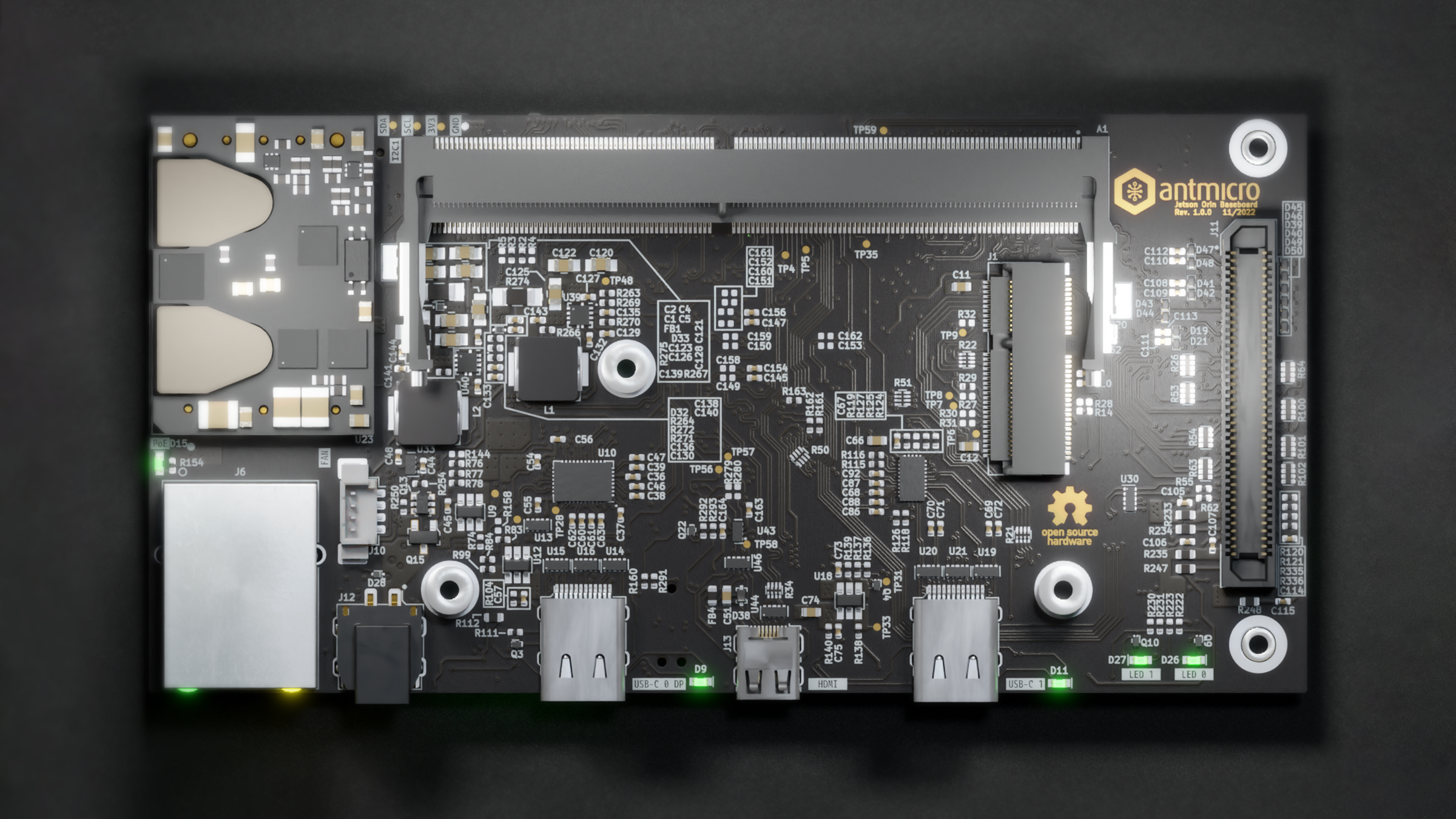
Possibilities with Orin NX and the Jetson Orin Baseboard
Antmicro’s Jetson Orin Baseboard has been built with versatility and modularity in mind. Its compact size makes it a great solution where the latest NVIDIA SoM is used in scenarios with physical size constraints. Adding another M2 slot as well as an extension port with a range of interfaces exposed, allows the Jetson Orin NX to be integrated with customized expansion modules, e.g. for FPGA-based pre-processing or interfacing with sensors and industrial controllers as well as M2 accessory boards, for extremely simple prototyping.
In this vein, it is worth mentioning that the baseboard is electrically compatible with a range of video accessories already developed by Antmicro, including adapters we have built for FRAMOS and Allied Vision cameras. These, along with other accessories can be found on Antmicro’s Open Source Portal.
As typically Antmicro’s customers need help in the rapid development of new products which target emerging niches where time to market is important, the baseboard is an excellent starting point for proof-of-concept projects which can then evolve to complete products such as smart cameras, mobile agents and intelligent kiosks or smart assistants powered by edge AI.
Our plans for the future include building variants for upcoming NVIDIA SoMs, such as the Jetson Orin Nano, as they are rolled out by NVIDIA, as well as continuing to evolve the family of accessories such as the recently released SDI-MIPI Video Converter or evolving our software library ecosystem such as Protoplaster or meta-antmicro.
Build your edge AI solutions with the Jetson Orin Baseboard and Antmicro
The Jetson Orin Baseboard makes for a perfect starting point for proof-of-concept designs in edge AI scenarios. With the array of available accessories, its modularity and adaptability, combined with Antmicros software hardware services the baseboard allows for fast turnarounds in early prototyping stages of projects.
If you are interested in developing powerful new edge AI processing products based on the NVIDIA Jetson Orin SoM, especially if you need highly customized setups adapted to your needs, do not hesitate to contact us at contact@antmicro.com. We will gladly assist you with the PoC and prototyping stages, and then customize the final product according to your application needs, e.g. adjust to a desired form factor, or minimize production costs.


